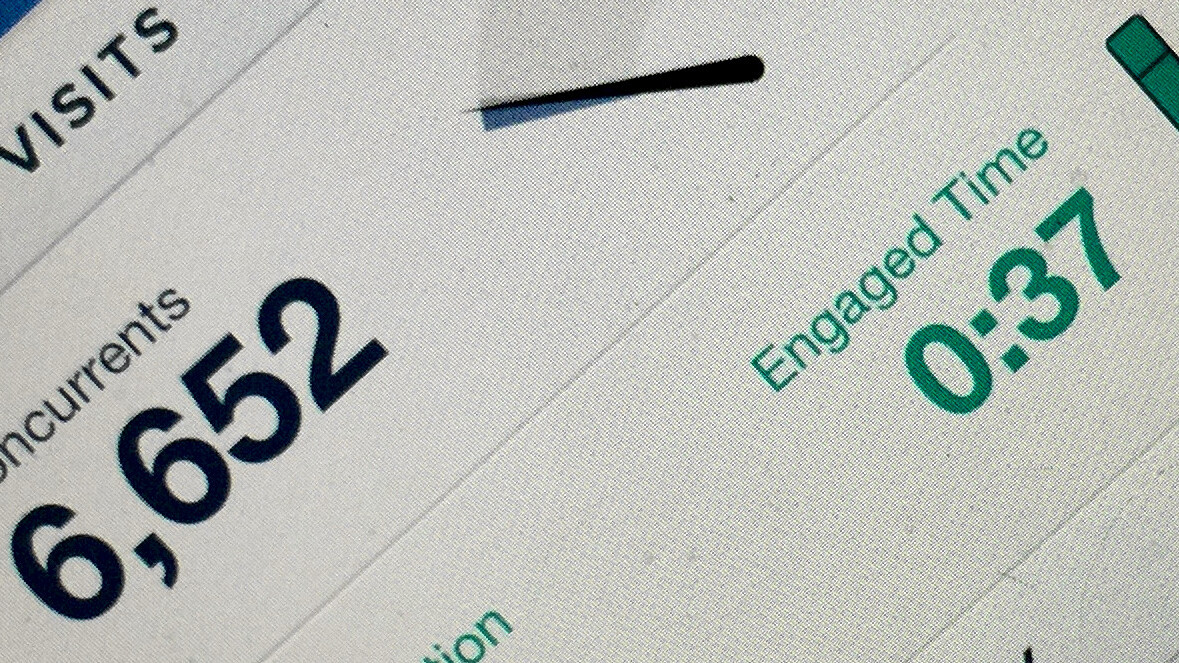
Sick of websites desperately trying to make you click on more and more pages? Recent times have seen a drive from some quarters to make attention, rather than pageviews, the primary way of measuring the success of online content.
That movement has received a boost today as real-time analytics firm Chartbeat announced that it has gained accreditation from the Media Rating Council for attention-based measurement of both content and advertising.
As the rates paid for display advertising have fallen, publishers have rushed to inflate their pageviews using clickbait titles and slideshows, while increasingly turning to higher-paying ‘native advertising’ in the form of sponsored posts and advertorials. This has led some to decry a decline in the ‘quality’ of online publishing.
Monetizing quality over quantity?
Many see ‘attention’ – the time spent actively engaging with a page – as the solution. If publisher business models start to revolve around the time users spend looking at ads or reading sponsored content, rather than just raw clicks, then not only are advertisers getting a fairer deal, but publishers are incentivized to focus on high quality content rather than volume of content, which can only be good for their audiences.
That’s the theory, anyway. Chartbeat CEO Tony Haile describes it as “a business model for quality on the Web,” and he’s not alone in his enthusiasm. The Financial Times and Upworthy are among the publishers keen to charge by the time spent on a page, while Parsely is another analytics platform planning to support attention-based metrics.
However, when it comes to all of this gaining the widespread trust of advertisers, the view of the Media Rating Council (MRC) in the USA is key. Haile tells us that after a 9-month approval process, the MRC has accredited 21 Chartbeat metrics such as ‘Viewability’, ‘Active Exposure Time’ and ‘Lifetime Exposure’ as complying with the Minimum Standards for Media Ratings Research. The MRC hadn’t responded to our request for comment by the time of publication.
The importance of being seen
The ‘viewability’ metric is a key one here as it measures whether a display ad has been viewed rather than simply loaded. While a number of advertising networks and adtech companies have already been accredited for measuring viewability, the MRC’s accreditation of Chartbeat means that both ads and content can be measured for attention in the same way.
This is particularly important for measuring the success of native advertising. If a sponsored post didn’t get as many pageviews as expected but those who did read it spent a lot of time soaking it all in, maybe it wasn’t such a flop after all.
We’ll watch with interest to see how quickly things develop from here, as attention continues to take, er, attention away from traditional pageview counters. Haile boldly describes today’s news as “the ‘Attention Web’ becoming an ‘Attention Economy’,” but there will need to be widespread support from advertisers, publishers and analytics companies for this to ring completley true.
In case you’re wondering, The Next Web uses both Chartbeat and Parsely for analytics and we look closely to how long people spend on each page. In the future, maybe advertisers will too.
Get the TNW newsletter
Get the most important tech news in your inbox each week.




